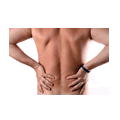 Quick Tips for Back Pain
Quick Tips for Back Pain
Sit without slumping. Place a sitting wedge or towel roll under your “butt bones” to create an effort-free arch in your lower back. (Do not do this if you have a diagnosis of spinal stenosis, however.)
After prolonged sitting, stand up, place your hands on your hips and gently bend backward from your waist a half dozen times. This helps to reverse any disc bulging that has occurred. (Not recommended for spinal stenosis patients.)
Gently tighten your tummy muscles (drawing your belly button in toward your spine) while standing. This will enable your abdominal, back, and pelvic floor muscles to act as a muscular brace, preventing harmful elements, such as gravity, load-bearing or movement-based forces, from injuring your back.
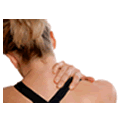 Quick Tips for Neck Pain
Quick Tips for Neck Pain
Use an empty 3-inch ring binder as a slanted, podium-like writing or reading surface. This will cut down on the amount of “head hanging” needed to approach your work.
Make sure your head is lined up over your shoulders and not over your breast bone. This cuts down on the amount of neck muscle effort required to hold your head upright.
Do not lie in bed or on the couch with multiple pillows propping up your head. Instead, prop up your entire trunk to eliminate stress on your lower neck (the site of most arthritis and disc disease).
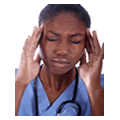 Quick Tips for Headaches and Migraines
Quick Tips for Headaches and Migraines
Many headaches originate in the upper neck region. For this reason, during a headache, apply a soft gel ice pack to the back of your upper neck (at the level of your hairline) while lying on your back. Cover the ice pack with a wet paper towel to ensure the transfer of maximum cold. Keep it in place for ten minutes. The ice helps treat both the associated inflammation and muscle spasms.
Tuck your chin slightly and draw your head further back over your shoulders. (Most headache patients have what is called forward head posture.) This correction will decrease compressive forces on the nerves and joints, which are often aggravating factors in headaches.
Fix your computer set up. Your monitor may be too high (causing you to backward bend your head on your neck) or too low (causing you to hunch forward to read the screen). Both of these faulty head/neck positions create stress and strain in the upper neck region, which can create or compound your headache.
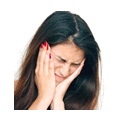 Quick Tips for Jaw Pain
Quick Tips for Jaw Pain
If your jaw joints are aching, put yourself on a soft diet (i.e., oatmeal, tuna salad, pasta and the like). Stay away from: steak, salads (there is a lot of grinding needed to chew these), bagels and biting into anything large (an apple) or overly hard (raw carrots). Hey, while you’re at it, quit the gum chewing. For your jaw it is similar to walking a mile on a sprained ankle!
Quit biting your nails, chewing on pen caps and/or smoking. All of these oral activities cause you to jut your bottom jaw forward in order to meet your top teeth. This action creates harmful strain on your temporomandibular joints (TMJs).
Protect your jaw joints when you yawn. Place the tip of your tongue on the roof of your mouth before yawning. As you yawn, maintain contact between your tongue and the roof of your mouth. This will limit the amount of “jaw dropping” in order to protect your jaw joints from injury.
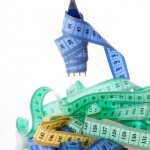 Quick Tips for Overcoming Overeating
Quick Tips for Overcoming Overeating
Never eat out of the package! Look at a package to get serving size information, remove only that, put the package away–and then enjoy your portion-controlled snack or meal.
When eating a home-cooked dinner, take correctly sized portions (see my book) and then pack leftovers away before you sit down, so you won’t be tempted to takes seconds…or thirds.
Restaurant suggestions:
- Ask for half of your dinner to be packaged for home (even before it arrives, if possible)
- Or, order a salad and an appetizer rather that a full meal.
- Send the bread basket back!
- Share a dessert.
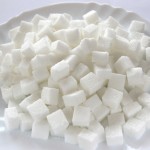 Quick Tips for Controlling Blood Sugar
Quick Tips for Controlling Blood Sugar
Significantly limit your intake of sugary (soft drinks, bakery items, candy) and simple carbohydrate (white bread, rice, potatoes, pasta) food and drinks.
Strategically pair foods: such as a lean protein with a low-fat food, or a whole grain/complex carbohydrate with either a protein or a healthy fat. This slows digestion and decreases blood sugar spikes. (Examples: turkey with low-fat Swiss cheese, strawberries with almonds, whole grain Italian bread with olive oil.)
Eat a healthy mid-morning and mid-afternoon snack. This will keep your blood sugar from dropping too low in between meals and it will also decrease your hunger-factor for the upcoming mealtime.
